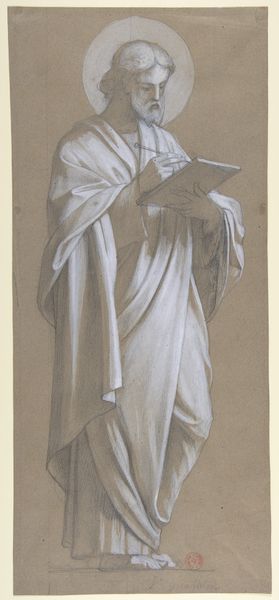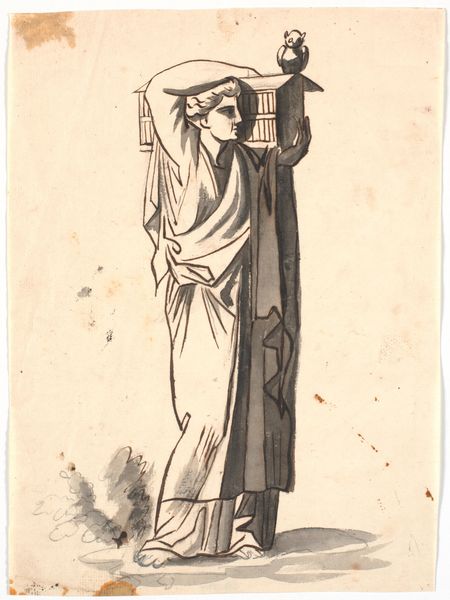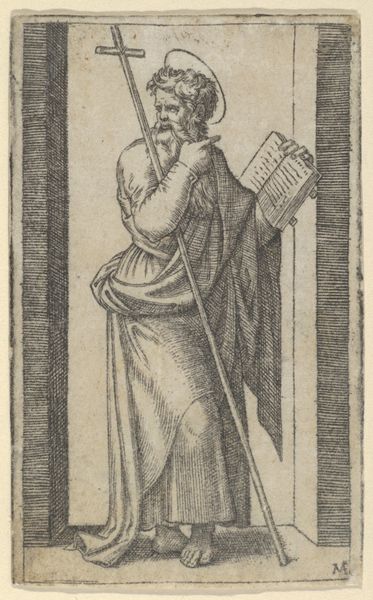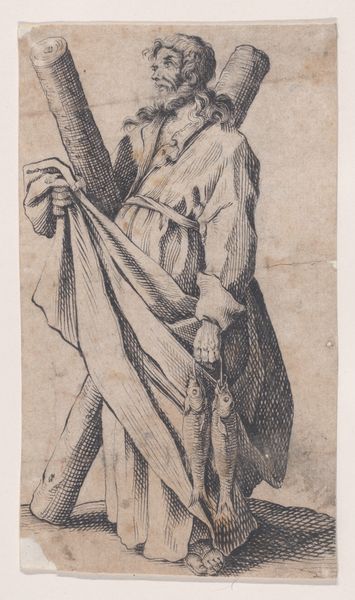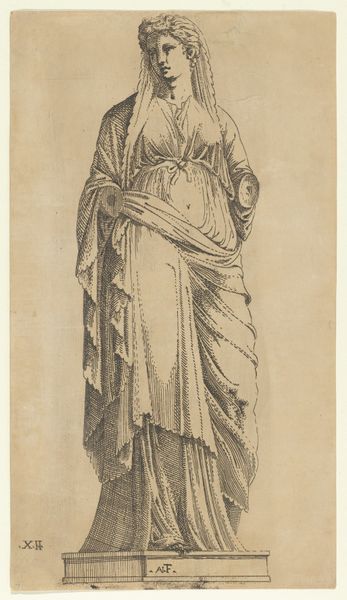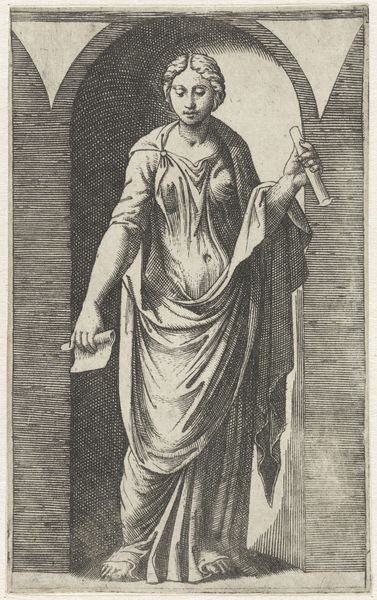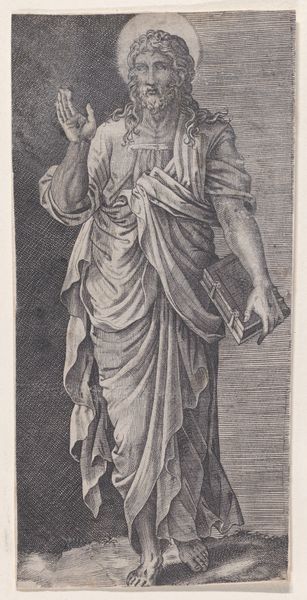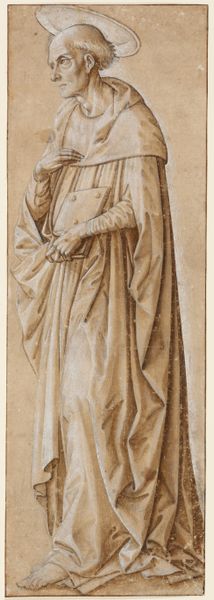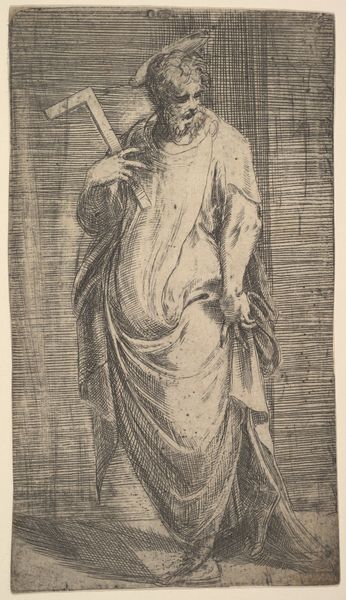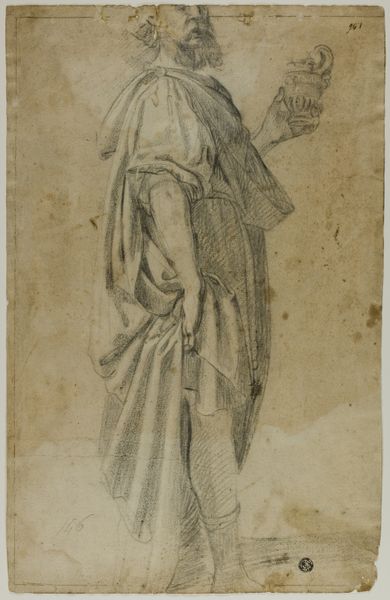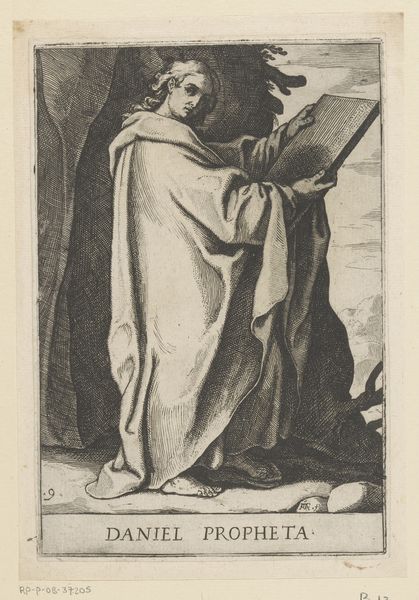
drawing, print, intaglio
#
portrait
#
drawing
# print
#
intaglio
#
figuration
#
12_15th-century
Copyright: Public Domain
Curator: Before us is the intaglio print "Saint John the Baptist," dating from approximately 1470 to 1480. The artist is known only as Monogrammist W with the key-shaped sign. Editor: What strikes me first is the starkness. It’s almost minimalist. The figure is composed of nothing but lines, yet he projects such solidity and presence. Curator: It is remarkable how effectively the artist used a single medium to convey a monumental figure. We can speculate about how this imagery and the narratives of Saint John influenced lay piety and artistic patronage in the late 15th century. It would be fascinating to understand which devotional programs these images supported. Editor: The drapery is meticulously rendered. Note how the artist uses parallel lines to give volume to the saint's robe, creating depth and movement. His bare feet connect him directly to the ground, anchoring him. Curator: Yes, his presence certainly underscores the important public role of religious figures in late medieval society. It's hard not to view this work through the lens of burgeoning religious and social reform. Editor: I'm drawn to the lamb depicted on the book; its presence adds layers to the composition and depth to the narrative. Is this intended to provoke some visceral emotion or response in the viewer? Curator: It serves as the ultimate symbolic key of Christ’s Passion—its integration into devotional imagery surely reflects the prevailing spiritual concerns of the period. It gives viewers, even now, direct access to fundamental beliefs of late medieval European culture. Editor: Observing how lines create an evocative figure offers such insights into form and perspective of the 15th century, it speaks of art as an echo chamber, with forms revealing patterns within the art, culture, and the public imagery ecosystem of that era. Curator: It is always illuminating how the artist’s representation of holiness both reflects, and perhaps shapes, contemporary attitudes toward religious figures. Thank you, it's offered me some further thinking on this artwork’s implications. Editor: And for me as well—especially regarding the intrinsic power of formal elements, that even in relative isolation, these choices can imbue this figure with meaning that continues to stir conversation so many years after it was created.
Comments
stadelmuseum about 2 years ago
⋮
In the New Testament, John the Baptist is the forerunner of Christ. He was thus a prominent figure and popular as a patron saint, and the demand for images of him was accordingly high. Blessings were actually performed with the right hand, and not—as in this engraving—with the left. The figure was probably copied from an older depiction, possibly a painting, and the printing process turned it into a mirror image of the original. The print in the Städel Museum is the last remaining impression of this engraving.
Join the conversation
Join millions of artists and users on Artera today and experience the ultimate creative platform.
